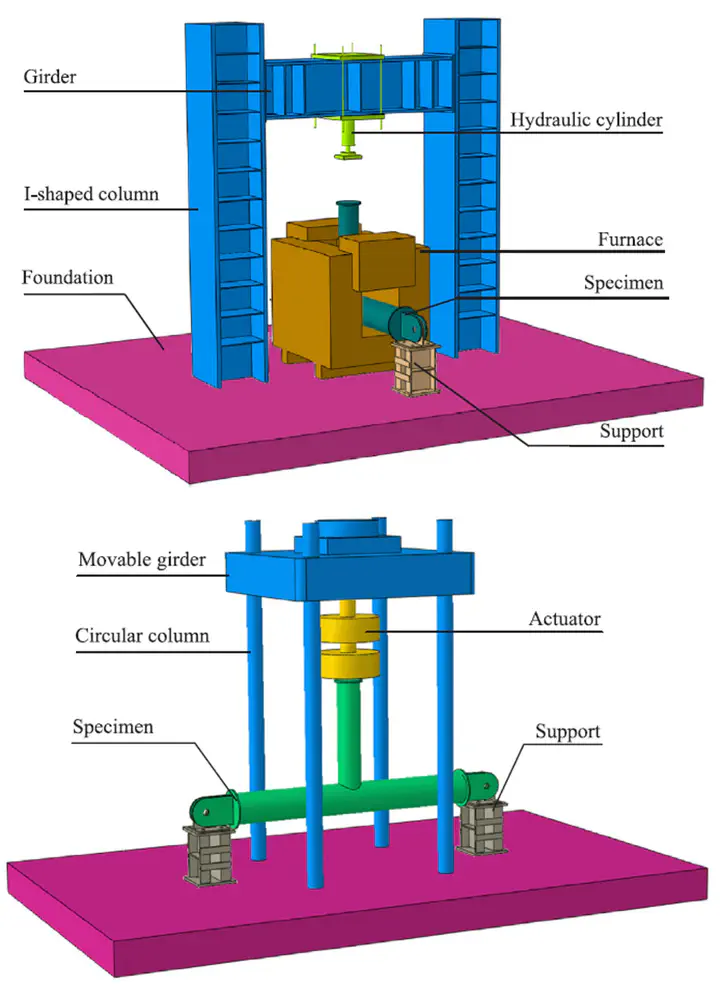Ultimate strength of tubular T-joints reinforced with doubler plates after fire exposure
 Schematic Illustration of Experimental Setup
Schematic Illustration of Experimental Setup
Abstract
Two doubler-plate-reinforced tubular T-joint specimens were tested to failure under axial loading. One specimen was tested at ambient temperature and the other was tested after a heating and cooling process. The failure mode for both specimens was the overall flexural failure of the chord. Load-displacement curves revealed that the heating and cooling process did not exert any negative influence on the stiffness of the joints but did slightly diminish their ultimate strength. A finite element (FE) method was then developed to simulate the structural response of the joint during a complete fire process, including ambient-temperature, heating, cooling, and post-fire stages. The results of the FE simulation were compared with the experimental data and that from previous literature. The comparison illustrated that the FE method reliably and accurately predicted the structural response of the joints. The FE method was then used in a parametric study, which revealed that the ultimate strength of the joint increased with β, ξ, and ε, but did not change with τ ranging from 0.4 to 0.8. Statistical analysis of the FE results indicated that the “twice elastic slope method” was more general and efficient than the 3% deformation limit for determining the ultimate strength of tubular joints. A simple approach to evaluate the post-fire strength of tubular T-joints reinforced with doubler plates is discussed.